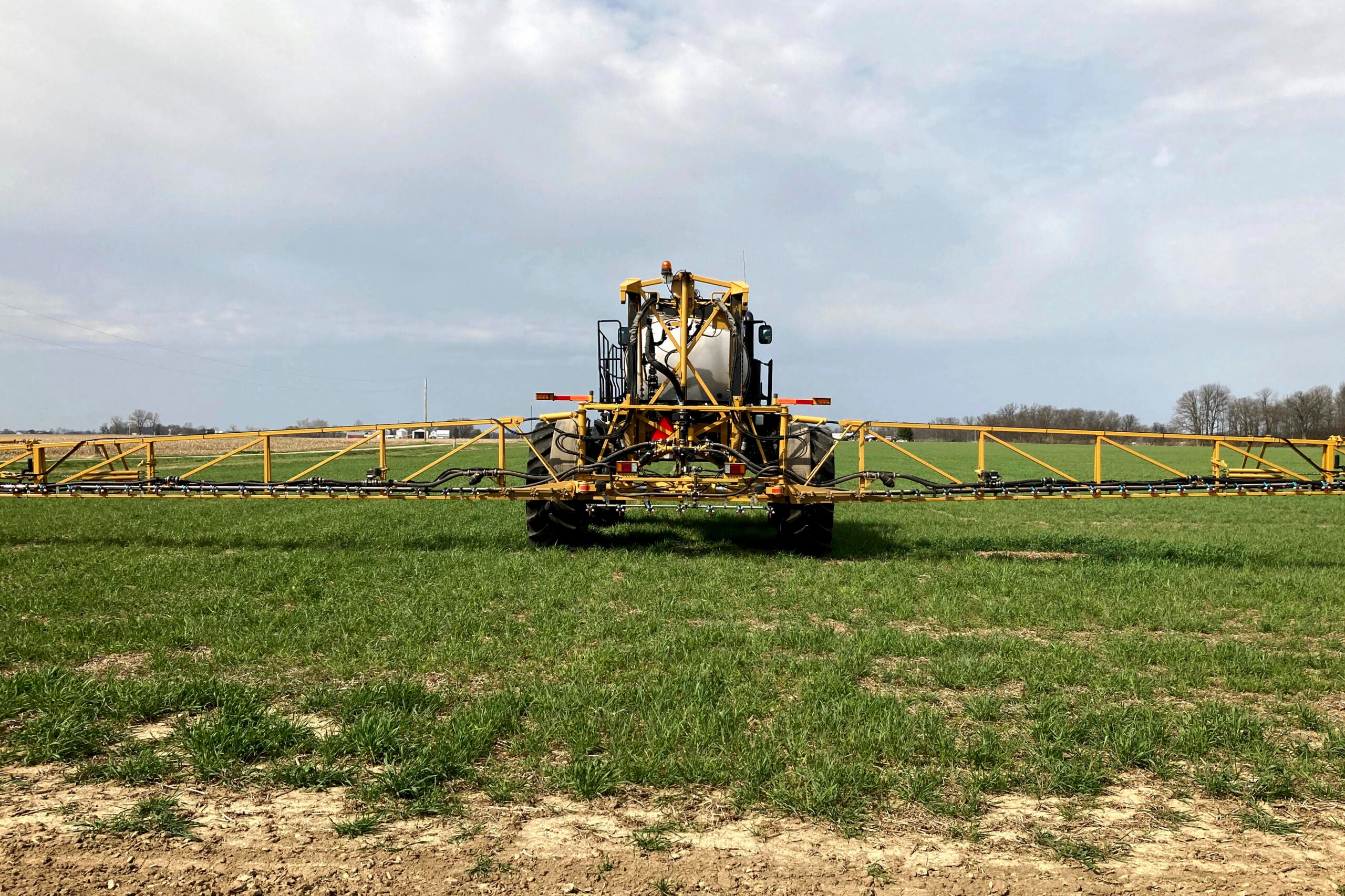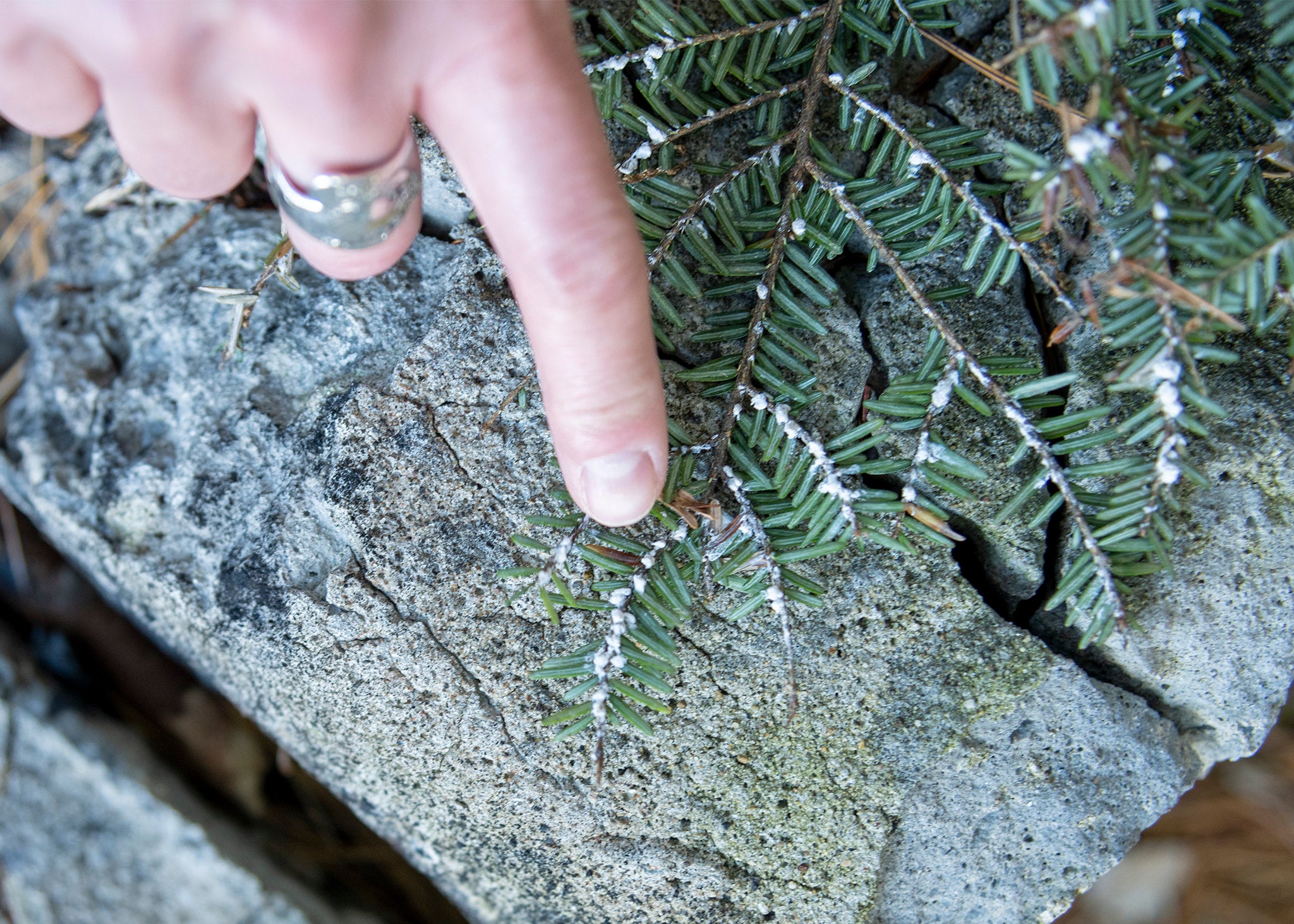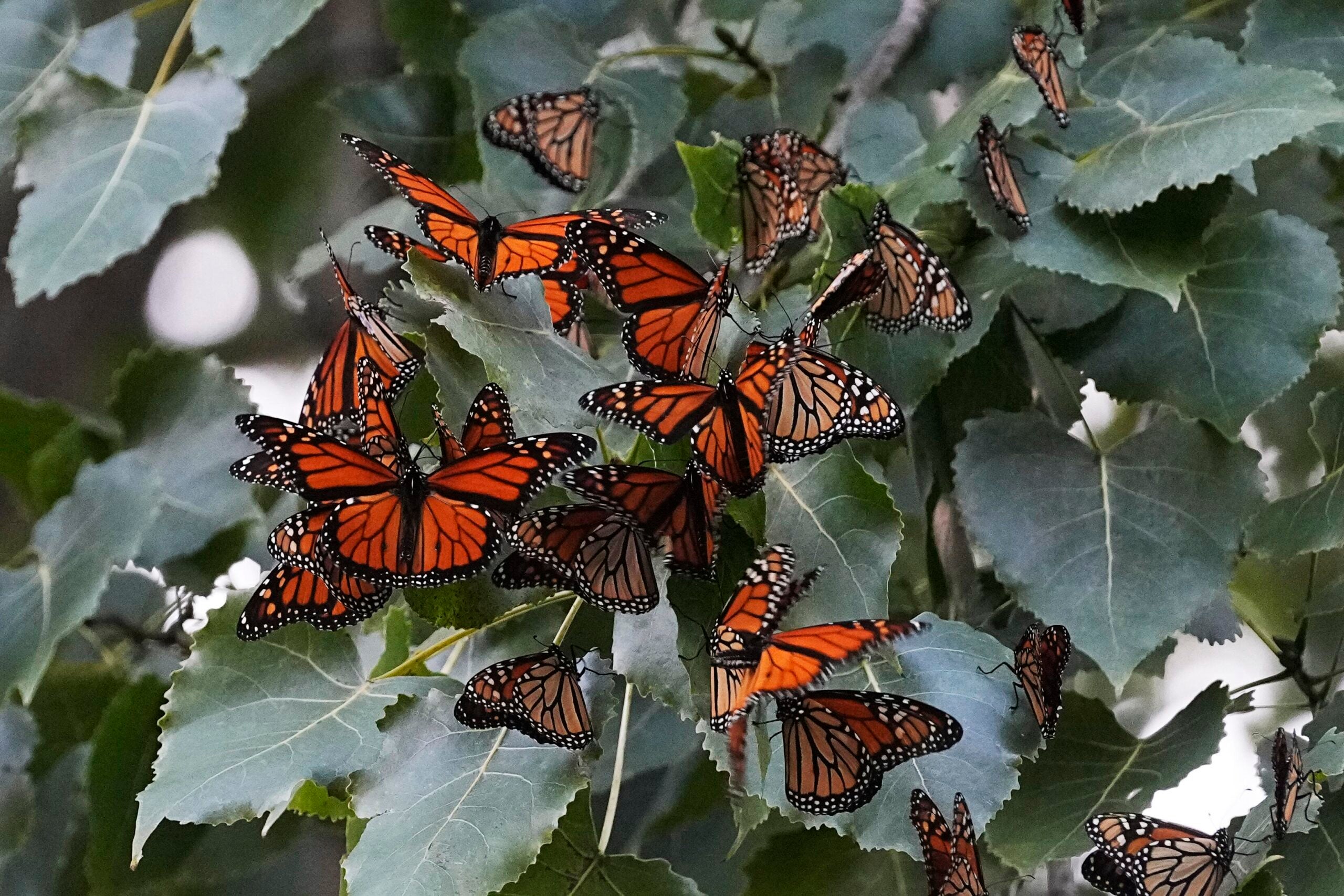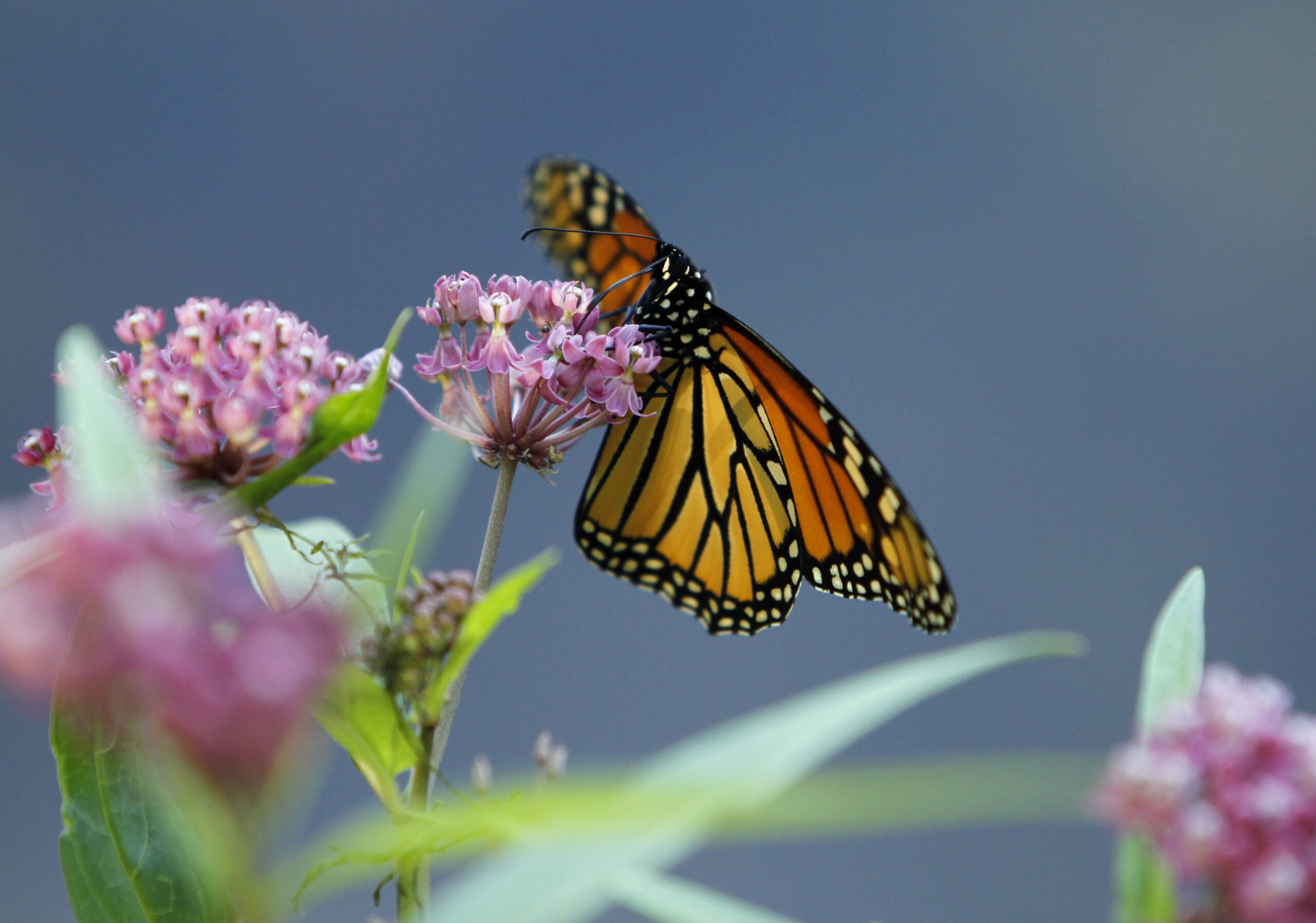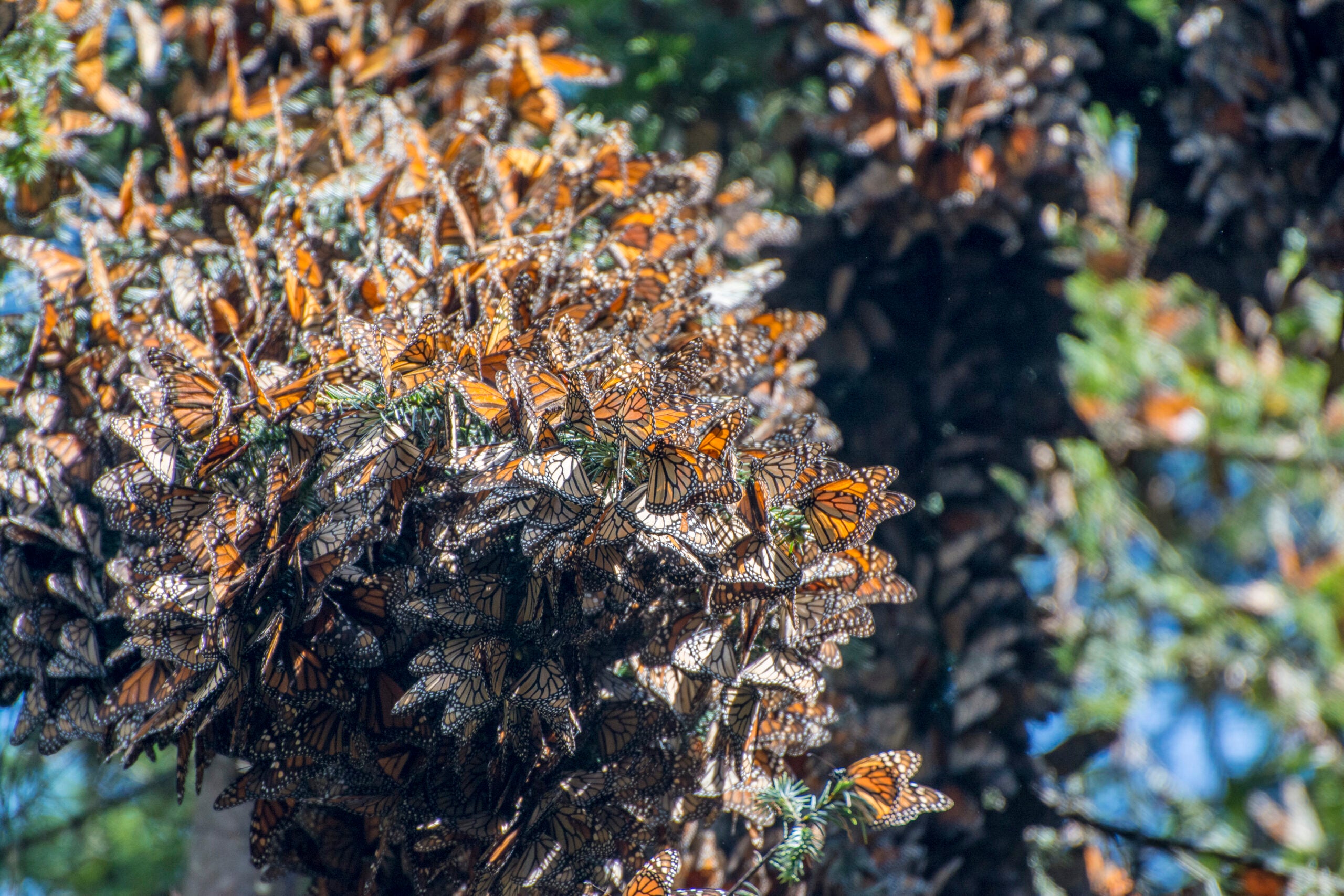The monarch butterfly is one of the most recognizable species in North America. But, the iconic orange and black insect is getting harder to find in Wisconsin.
A newly released study shows a link between the decline of butterflies and the use of agricultural insecticides in the Midwest.
“Both butterfly abundance and species declined by 8 percent between 1998 and 2014. However, monarch butterflies in particular declined over 20 percent,” study co-author Scott Swinton said on WPR’s “Wisconsin Today.”
News with a little more humanity
WPR’s “Wisconsin Today” newsletter keeps you connected to the state you love without feeling overwhelmed. No paywall. No agenda. No corporate filter.
The Michigan State University professor said the 17-year-long study examined 81 counties throughout Illinois, Indiana, Iowa, Ohio, Michigan and Wisconsin.
The data captured how farmers use fertilizers, pesticides, seeds and other tillage methods to maintain their land and crops.
“That lets us disentangle the effects of six different kinds of pesticides, two different kinds of herbicides, glyphosate — which is Roundup — and all other herbicides,” Swinton said. “What stood out in particular was the effect of neonicotinoid seed treatments, which is an insecticidal seed treatment.”
Swinton said neonicotinoid seed treatments are effective in controlling invasive insects in soybean production, but they inadvertently introduce a new toxin into the environment that affects plants other than soybeans.
Karen Oberhauser, professor emeritus in entomology with the University of Wisconsin-Madison, told “Wisconsin Today” this data on insecticides is “exciting” because it measures the impact humans have on monarchs and other species.
“A lot of people come up to me and say, they’re just not seeing as many monarch butterflies as they have in the past,” she said. “(This study) is really our ability to dig into the data and think about the changing practices in agriculture.”
According to Swinton, U.S. farmers began to use neonicotinoids in the early 2000s when an invasive insect from East Asia, the Soybean Aphid, began spreading rapidly in soybean fields in the Midwest. The aphid eventually reduced soybean yields by as much as 20 percent.
“I worked with a number of entomologists on how to manage (chemical and non chemical) pest management practices. But the chemical companies came up with a solution which was to treat soybean seed with these neonicotinoid insecticides,” Swinton said.
In 2018, the European Union banned the outdoor use of neonicotinoids after seeing evidence of a link between its use and honeybee colony collapse disorder. Whereas in the U.S. in 2021, neonicotinoids were the most widely used insecticides, according to a study published in the National Library of Medicine.
Oberhauser and Swinton also agree changing weather patterns in the Midwest due to climate change are another factor causing monarch numbers to go up and down year to year.
“We need habitat available over lots and lots of land so that monarchs and other butterflies will be able to do well across all of these years with the changing weather patterns, ” Oberhauser said.
Going forward, Swinton hopes the U.S. Geological Survey and other public data sources continue to track the use of neonicotinoid insecticides and their effects on butterflies.
Oberhauser added that there are ways for Wisconsin residents to track butterflies and send information to scientists.
“We have Wisconsinbutterflies.org where people can report any butterfly they see. They can join a monarch butterfly citizen science project, like the Monarch Larva Monitoring Project or Journey North,” she said.
Wisconsin Public Radio, © Copyright 2025, Board of Regents of the University of Wisconsin System and Wisconsin Educational Communications Board.



